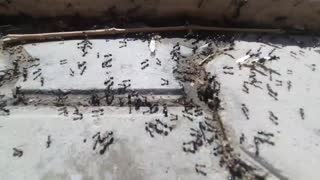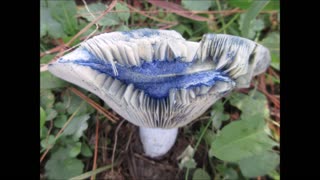Premium Only Content

Snails come out after rain
5 Incredible Snail Facts!
- These animals contain only rudimentary eyes and no ears at all. Instead, they interact with the environment around them through their sense of touch and their ability to detect vibrations.
- One of the more unusual facts is that many species are hermaphroditic, meaning that they possess both male and female reproductive organs. After mating, snails bury their eggs below the ground. Depending on the climate conditions, these eggs will hatch a few weeks later. The young snails are so eager for food that they may consume the unhatched eggs from the same parents. During development, they undergo a process called torsion in which its mass is rotated to one side, meaning the anus is actually located close to the head.
- Snails can survive the harsh winter by living off their fat reserves. They have multiple lines of defense to protect their soft bodies as they hibernate: first, they dig a small hole in the ground, then they retreat into their shell, and finally, they seal off the entrance of the shell from potential predators. This process of hibernating is called estivation. It is also known as the summer sleep but it is different from how snails sleep daily.
- Some aquatic snails (like the nerites) have gills to breathe underwater; others retain both lungs and gills. The apple snail has a breathing tube that reaches to the surface of the water.
- The sea snail has a natural adhesive that allows them to stick on rocks without being carried away by the surf. This has inspired some researchers to develop a kind of experimental medical glue for use in repairing heart defects.
Snail Species, Types, and Scientific Name
- The scientific name of the snail is Gastropoda. This is derived from two Greek words meaning “stomach” and “foot.” The scientific name refers to the position of the foot below the gut. Gastropods belong to the phylum of Mollusca. In terms of the number of species, they are the largest class within the phylum. About 24,000 species have so far been subject to classification, but there may be 85,000 or more species of gastropods in the world. These can be divided into a few general classifications:
- Land Snails – These are the most well-known and the most likely to interact with people. The majority of land snails fall within the sub-class of Heterobranchia, along with the slugs.
- Freshwater Snails – Represented by thousands of different species, including the apple snails and nerites, freshwater species primarily occupy rivers, lakes, and streams.
- Sea Snails – Elusive and rarely seen, most gastropods actually inhabit the deep seas and near coasts, an entire underwater world secluded from people. Sea snails are divided into a few different classifications such as the Vetigastropoda and Caenogastropoda.
Appearance: How to Identify Snails
- While most people are familiar with the basic garden snail, the entire gastropod class contains an immense diversity of different appearances and forms. Apple snails, nerites, ramshorn snails, etc all have their unique characteristics. In terms of their diversity, the gastropods are second only to the insect class. However, snails are not insects. Most snails possess a soft, tube-shaped body, a muscular foot for locomotion, one or more pairs of tentacles emerging from the head, and small eyes at the top or the base of the main stalks.
- The most conspicuous feature that all species share is the spiral shell. It is attached directly to the body and cannot be removed without killing the snail, since it contains most of the internal organs. Slugs are the closest animals that look like snails, however, both animals are not the same. Slugs are the only gastropods that live without shells at all.
-
 0:15
0:15
sadeghiarani
3 years agoColony of warts after rain
12 -
 0:21
0:21
Trump_Girl24
4 years agoBeautiful clouds after a hard rain.
22 -
 0:07
0:07
daily life vlog
4 years ago $52.83 earnedRainbow after rain
21.1K9 -
 1:16
1:16
GladTidings
4 years agoAfter the rain
24 -
 1:21
1:21
Melodies of Our Plants and Water Chime Crystals
3 years agoAfter the Rain Indian Cap Mushroom September 2021
9 -
 14:59
14:59
RealAmericasVoice
3 years agoGovernment, Media come After Freedom Convoy
1.11K7 -
 0:21
0:21
Life is one so let's be happy
3 years ago $0.02 earnedRiver after the rain in the summer
55 -
 LIVE
LIVE
Grant Stinchfield
2 hours agoTeachers’ Lounges Turned Into Political War Rooms
75 watching -
 1:01:04
1:01:04
VINCE
3 hours agoTop Democrat Says the Quiet Part Out Loud | Episode 153 - 10/23/25
191K208 -
 LIVE
LIVE
LFA TV
13 hours agoLIVE & BREAKING NEWS! | THURSDAY 10/23/25
3,807 watching